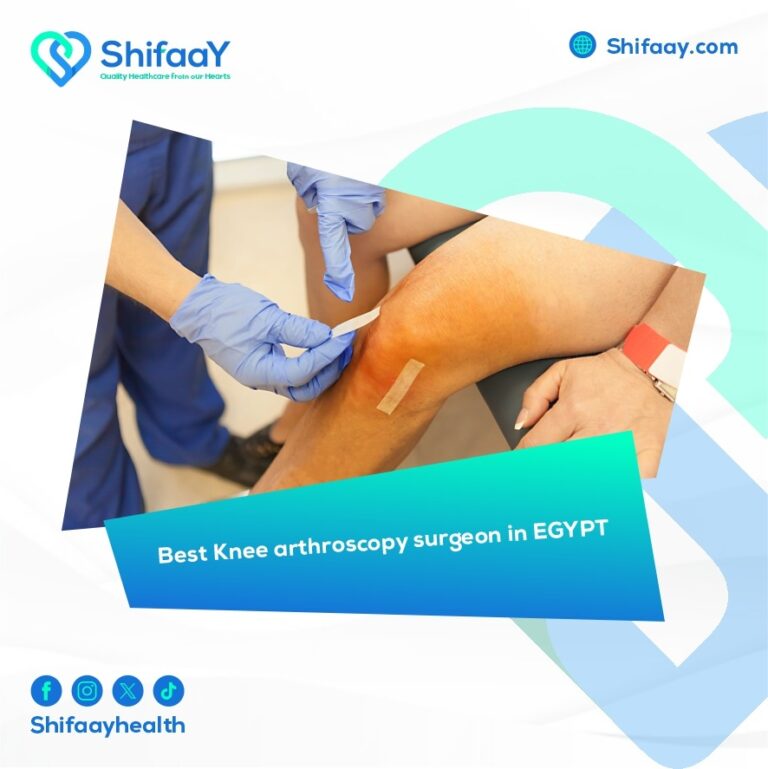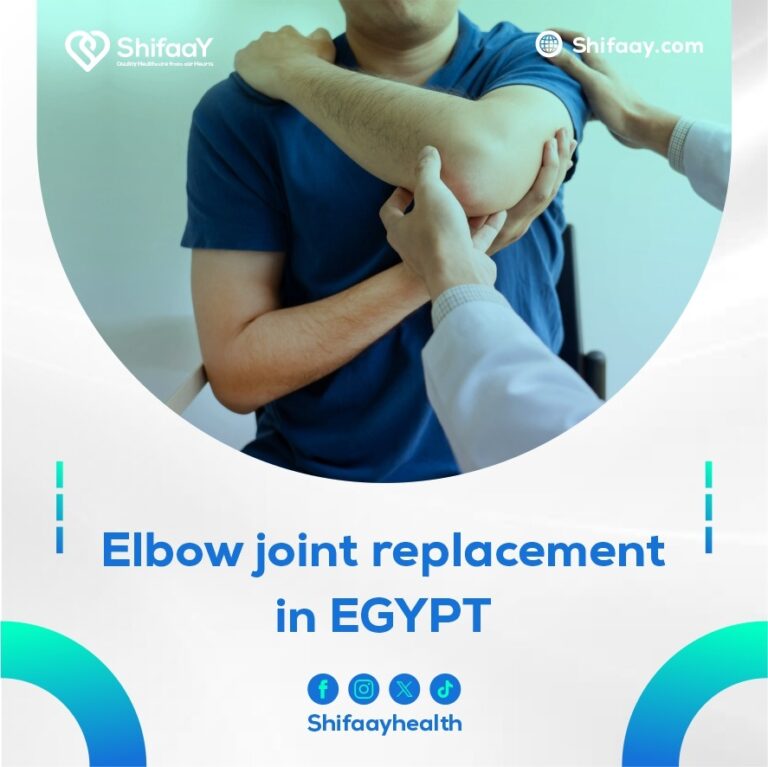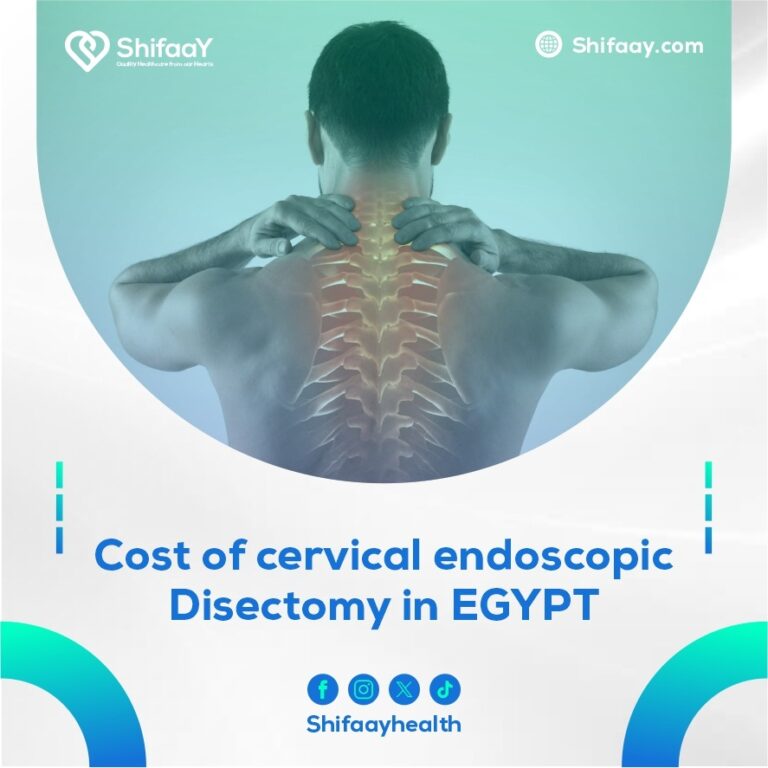Knee meniscus tear, treatment and causes
A knee meniscus tear is an injury that occurs in the knee. It is regarded as one of the most typical injuries among athletes and those who sustain daily trauma from demanding activities. The knee meniscus plays a vital role in the growth and function of the knee because it distributes pressure and directs movement.
It is one of the most serious conditions that many people encounter and that requires close attention, so you can get treatment for this tear by going to your doctor and doing as they advise. A knee meniscus tear can be fully healed, enabling the patient to get back to their normal activities, including sports.
With Shifaay Center, the best medical tourism center in Egypt now at your disposal, you can consult with the best orthopedic surgeon in the field for help managing this serious illness, assisting you in following the recommended course of treatment, or, in the event that surgery is required.
What is knee meniscus?
The meniscus is a cartilage structure that sits between the shinbone and the femur in the knee joint and acts as a cushion to absorb shocks. Meniscus injuries have been found to be frequently brought on by abrupt twisting or rotational motions, which are prevalent in sports like tennis and football.
Treatment of knee meniscus tear
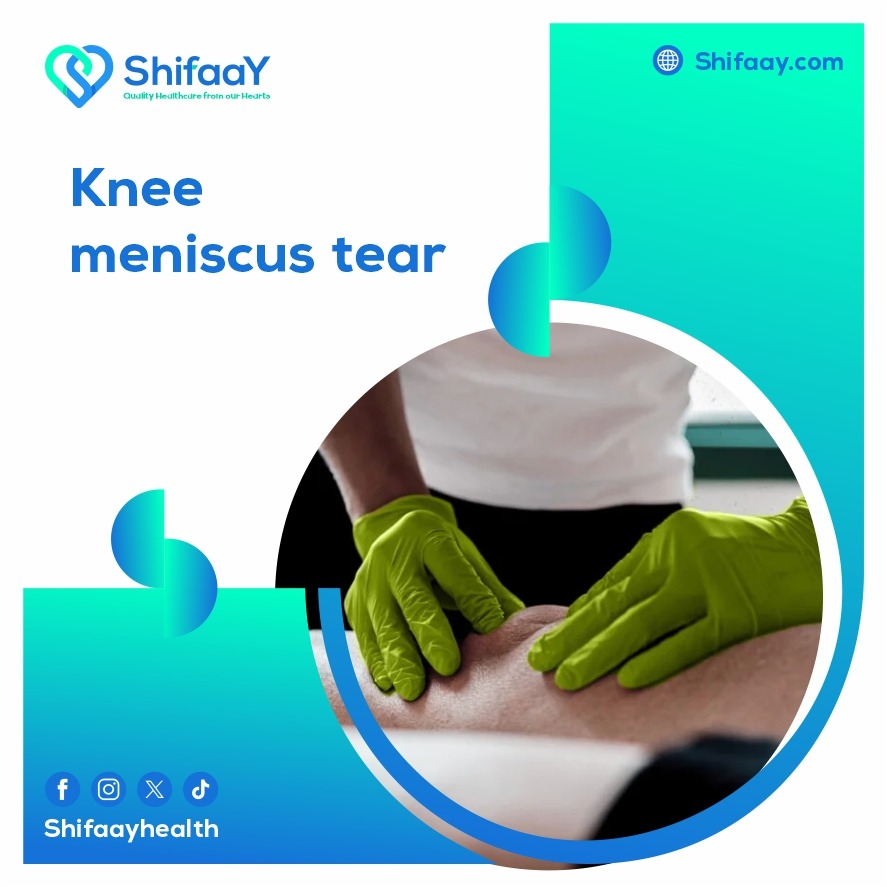
Knee meniscus tears are common in people who struggle with daily tasks as well as athletes. Meniscus tears can be repaired, and patients’ quality of life can be improved with the advanced techniques and treatments available in modern medicine. There are also effective treatment steps, one of which is for the doctor to correctly diagnose a knee meniscus tear, since this is an essential first step in delivering care.
For an accurate diagnosis, X-rays, magnetic resonance imaging, and a direct medical examination of the affected joint are all essential. New advances in radiology, such as magnetic resonance imaging, allow for high-precision tissue visualization and precise measurement of the extent of a meniscus tear.
● Physical therapy
Physical therapy is a crucial part of knee meniscus tear treatment because it strengthens and stretches the knee muscles. Physical therapy also includes various exercises, heat and cold therapy, and massage to improve stability and balance.
● Pharmaceutical
Knee meniscus tears are treated with nonsteroidal anti-inflammatory drugs (NSAIDs) to reduce pain and inflammation in the affected area, as well as topical medications such as local anesthetic creams.
● Local injections
In more severe cases, local anti-inflammatory injections or topical steroids may be used to relieve pain and inflammation in the affected joint.
● Surgery
If knee meniscus tear is severe enough to not improve with non-surgical treatment, surgery may be the best course of action. This procedure can involve implanting artificial cartilage to replace or repair damaged cartilage.
After treatment, the patient must adhere to a strict rehabilitation program to strengthen and regain knee movement. The rehabilitation program includes exercises for the muscles, functions, and sports that help restore natural movement.
If a patient sees a specialist doctor and follows the recommended treatment plan, a knee meniscus tear can heal completely and return to daily and athletic activities with confidence.
Read also: Computer assisted knee joint replacement technique
Knee meniscus
The knee meniscus is a stable cartilage disc located in the knee joint, midway between the thigh and the leg. The primary job of this cartilage is to distribute pressure and guide movement while the knee is in motion.
The knee meniscus helps to guide movement in the knee joint, which facilitates smooth flexion and extension of the knee.
In terms of pressure distribution, cartilage assists in distributing force applied to the joint, reducing stress on the bones and protecting them from damage.
The most significant causes of knee meniscus injury are:
● Sports injuries: such as falling on the knee or slipping and rapid rolling of the knee during sports.
● Aging: As we age, cartilage naturally tends to wear down and become damaged.
● Overuse: Overuse of the knee can wear down the cartilage over time, especially in people who perform activities that require repetitive bending.
Knee meniscus tear
A “knee meniscus tear” is a condition caused by tears or damage to the meniscus in the knee joint. This cartilage is crucial to the development and operation of the knee, and a person’s mobility and capacity for daily activities are greatly impacted by the state of this cartilage.
Not all cases of knee meniscus tears require surgery; in fact, some can be managed. For this reason, prior to initiating surgery, Doctors ensure the necessity of surgical intervention by conducting a comprehensive evaluation that includes a physical examination and the use of magnetic resonance imaging (MRI) to acquire precise images of the knee’s internal cartilage. Through physical therapy, rest, or pharmacological techniques.
If surgery is necessary, the method chosen will be determined by the type, location, and size of the tear; however, there are two main methods for meniscus surgery:
● First, surgical repair: This method involves suturing the torn cartilage. This type of surgery is used when the tear is located in a blood-rich area, which aids in cartilage healing.
● Second, partial resection: In this method, only the damaged part of the cartilage is removed, which helps relieve pain and improve movement. This method is more common and used when the cartilage cannot be repaired.
Symptoms of a Knee meniscus tear
The severity of the symptoms of a knee meniscus tear varies from person to person. Common symptoms include:
● Pain in the knee joint, especially during movement or weight bearing. The pain may be sharp and sudden in the case of an acute tear, or begin gradually in the case of a gradual tear.
● knee joint swelling, which may appear immediately following the injury or may develop gradually over several hours or days.
● Stiffness in the knee joint, making it difficult to move.
● A clicking or cracking feeling when moving the knee.
● Weakness in your quadriceps, affecting your ability to fully use your leg.
● Feeling like the knee is “stuck” or locked when trying to move it.
If you experience any of these symptoms, you need to see a specialist right away. The doctor will perform a physical examination to evaluate knee mobility and determine the extent of pain and swelling. The doctor may also recommend MRIs and X-rays in order to obtain exact images of the knee joint.
Degrees of knee meniscus tear
The degrees of knee meniscus tear vary based on its severity, impact on the knee, and movement. These degrees include:
● First degree: a simple tear accompanied by mild pain and slight swelling in the affected area. Treatment can also be done through rest and physical therapy.
● Second degree: a moderately severe tear, accompanied by moderate pain and visible swelling. This type of tear may require surgical treatment to repair the damaged cartilage.
● Third degree: a severe tear accompanied by severe pain and difficulty moving the knee. This type of tear often requires surgery to repair the damage and restore knee function.
Whatever the degree of knee meniscus tear, early diagnosis and proper treatment can reduce potential complications and help restore better knee functions, but the patient must see a specialist doctor to evaluate the condition and develop an appropriate treatment plan.
Risks of knee meniscus surgery
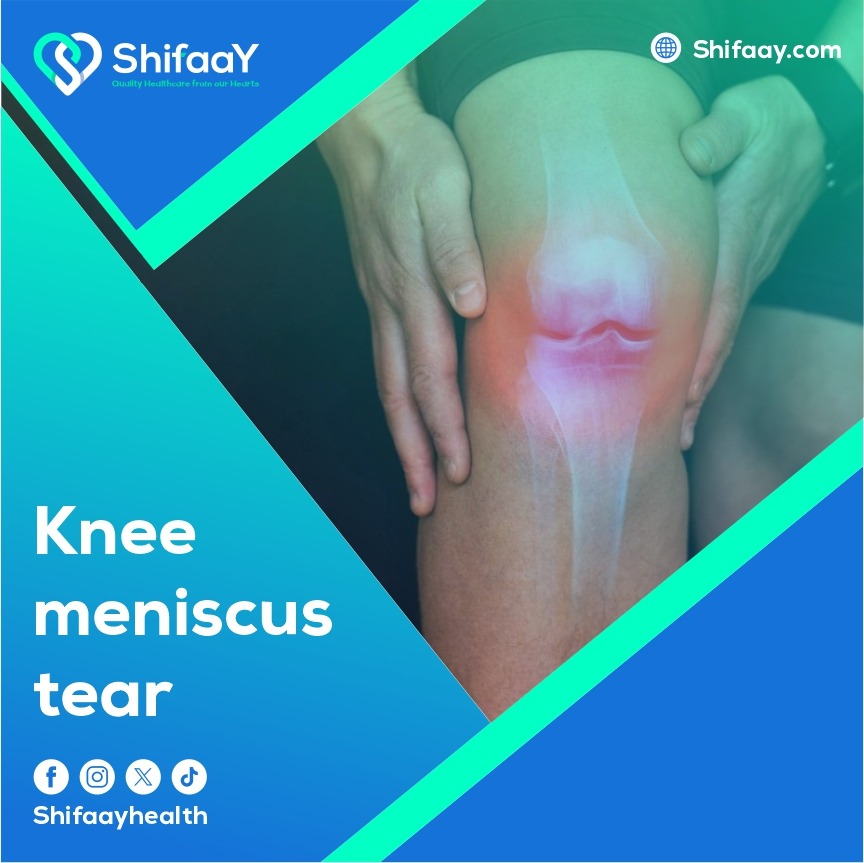
Knee Meniscus surgery can help many people with their knee conditions, but there are possible risks and side effects to take into account.
The knee may have a period of pain and swelling after surgery; this pain can be uncomfortable and requires medication to relieve.
Following surgery, the meniscus insertion site may become inflamed or infected; close wound care and antibiotic use are required to minimize this risk and prevent complications.
After the surgery, if the knee becomes less flexible and moves more restrictedly, it might become harder to do some everyday tasks. Physical therapy sessions may also be needed to restore normal movement.
The side effects of surgery may make it difficult for people to perform certain daily tasks, like walking or climbing stairs, which could reduce their quality of life.
Cost of knee meniscus surgery
The cost of knee meniscus surgery varies greatly based on several factors, including:
● The type of surgery:
Meniscectomy: It is an operation to remove the damaged part of the meniscus. This operation is also considered less complicated and less expensive than reconstruction.
Meniscus restoration is a more complex procedure used to repair meniscus tears. This operation also requires high surgical skill, and its cost is higher than resection.
● The severity of the tear:
The more severe the tear, the more complex and expensive the operation.
● Rupture location:
The cost of the operation also varies depending on the location of the meniscus tear.
● Center:
The cost of the operation also varies depending on the center where it is performed.
● Surgeon’s experience:
The more experienced the surgeon, the more expensive the operation.
In general, the cost of a meniscus operation ranges between 40 and 60 thousand Egyptian pounds, and the cost may be higher or lower in other countries.
Also follow: When does walking start after hip replacement?
Does a knee meniscus tear heal?
A torn meniscus can heal in some cases, but surgery may be required in more severe cases, so we recommend consulting with a specialist to avoid complications.
Is knee meniscus surgery difficult?
Yes, meniscus surgery is thought to be relatively difficult and demands a high level of surgical skill. For this reason, patients must rely on a doctor who is a specialist in his field and whom they trust to perform the procedure in a way that is appropriate for the patient’s condition.


